History of The Sovereign
On 28 October 1489, Henry VII ordered the officers of his Royal Mint to produce ‘a new money of gold’, a coin that would convey the authority of his reign. The Sovereign was not the first gold coin to be used in English currency – one of the first was the 1257 Henry III penny – but it was the largest and most valuable gold coin ever minted in England at the time.
The first Sovereign weighed 240 grains (15.55 grammes) and was created from the traditional fine-gold standard pioneered under Edward III. One Sovereign was worth 20 shillings and these hefty coins were primarily used by traders for large transactions.
It is unusual for a coin to have such close ties to the monarchy, but it was by decree that the coin was known as The Sovereign. The splendid new coin was used by Henry VII to strengthen the identity of his reign and his reform of coinage was a reinforcement of his supreme authority.
After falling out of favour during the reign of James I, The Sovereign returned in 1817 under George III. It was then that Benedetto Pistrucci’s iconic St George and the dragon design was first introduced. This is still seen on the coins 206 years later, though the design has been changed on a handful of occasions to mark significant royal events.
The Sovereign is a timeless symbol of strength, reliability and accuracy that has helped shape a nation through times of war and peace.
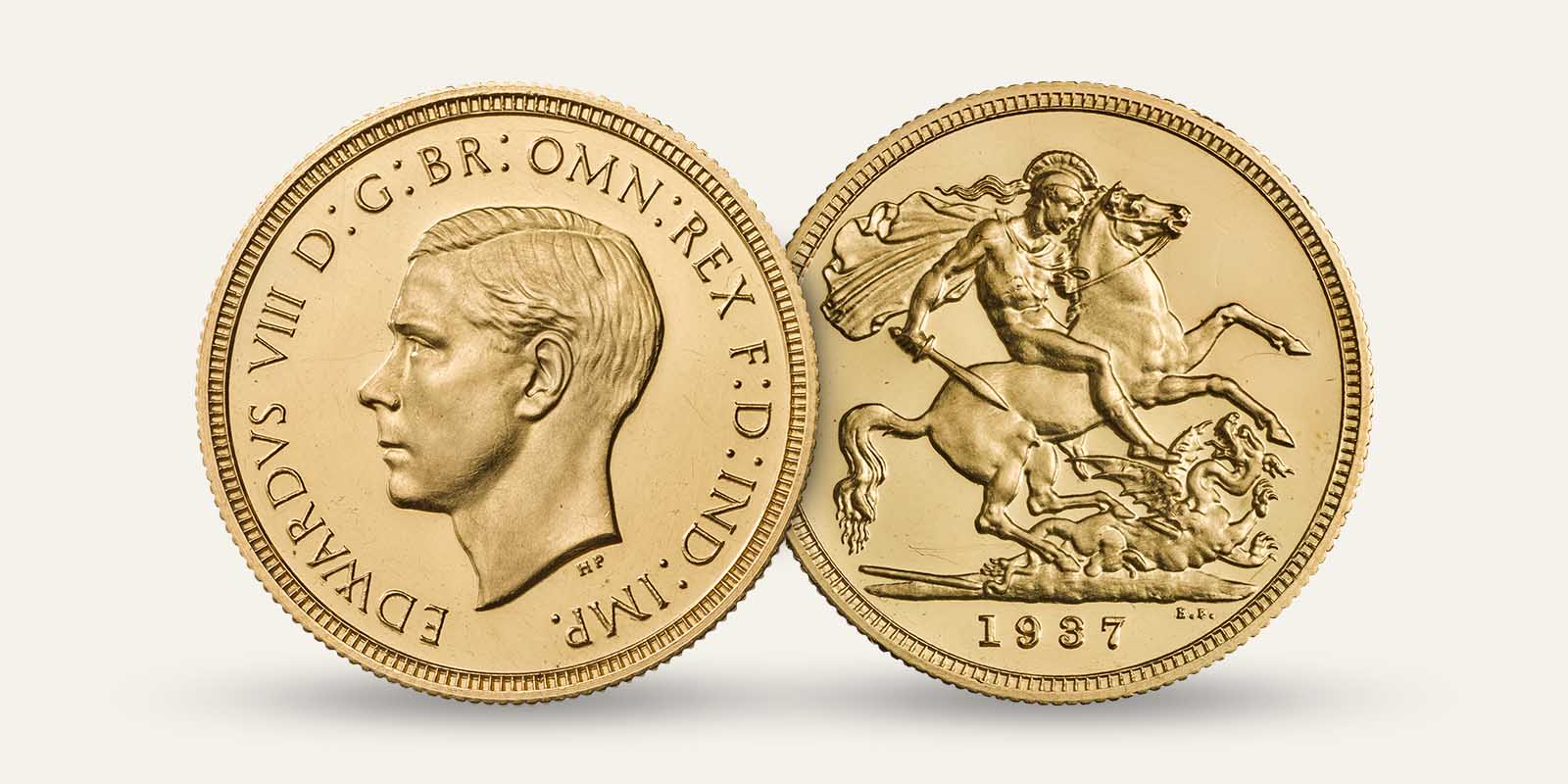
1937 Edward VIII Sovereign
Often described as the ‘coinage that never was’, the 1937 Edward VIII Sovereign is not only the rarest Sovereign, but one of the rarest coins in the world. Its story is one of love, scandal and a unique moment in British history.
In 1936, the new king intended to marry the controversial American divorcee, Wallis Simpson. Due to Edward’s position as head of the Church of England, this desire was met with opposition from parliament and within the Royal Family. The British public also made it clear that they would never accept Simpson. On 11 December 1936, Edward VIII announced on the radio that he was stepping down from the throne. He became the only monarch in British history to voluntarily abdicate.
This astonishing act of love and loyalty rocked Britain and put a stop to the minting of Edward VIII coinage that was due to begin on 1 January 1937. A handful of proof and pattern coins had been struck in preparation, of which only six are thought to exist today. Adding to the coin’s fascination, the portrait of Edward broke royal tradition as it faced left, when each monarch customarily turned away from their predecessor. In January 2020, The Royal Mint brokered a deal to sell one of these rare coins for £1 million, making it the most valuable British coin ever.
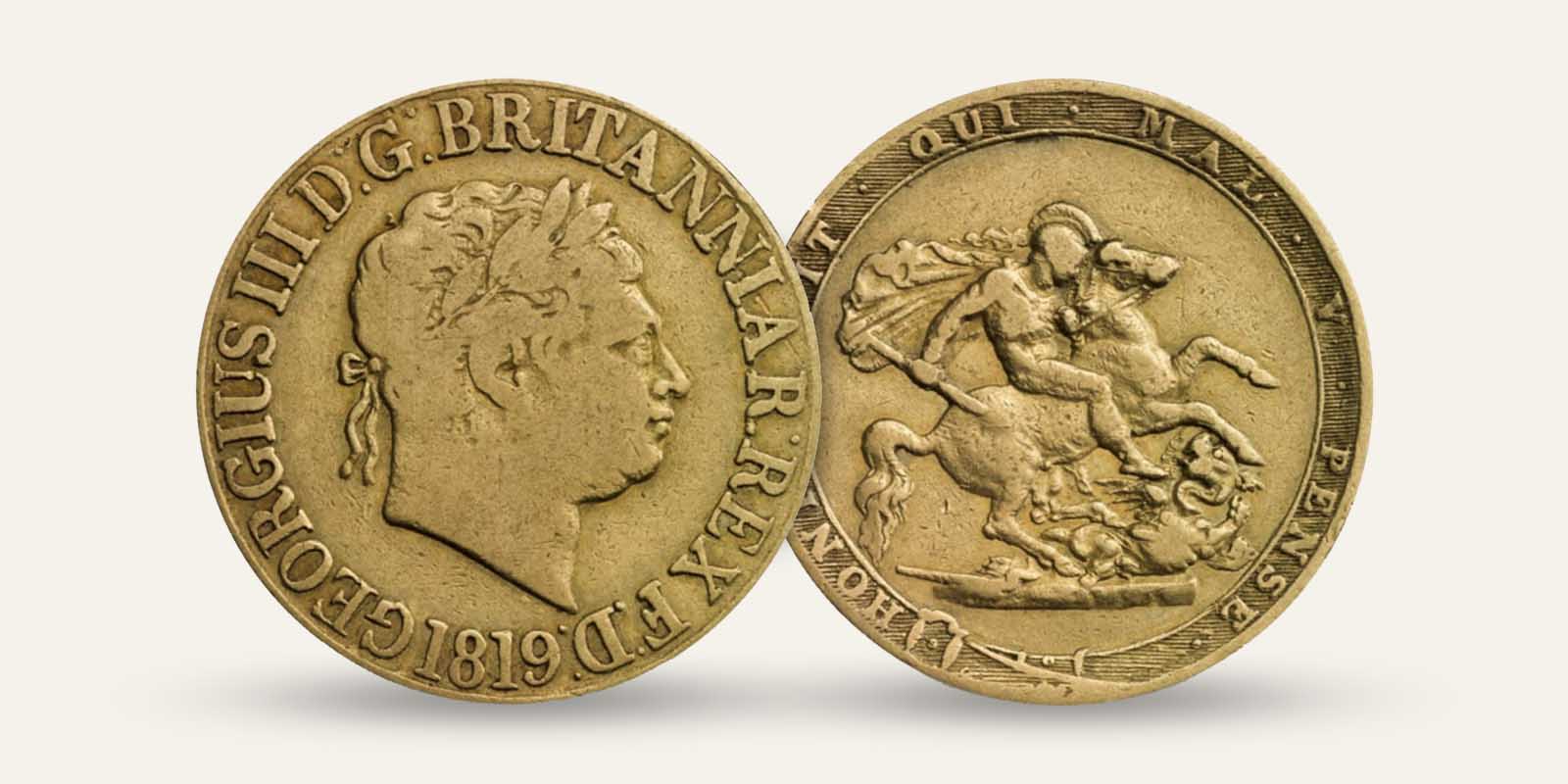
1819 George III Gold Sovereign
The 1819 Sovereign is another example of an exceedingly rare British coin that has fascinated collectors since its inception. This is primarily because the coin was never produced on a large scale. Only 3,574 coins were struck, all from gold supplied by private merchants. This meant that only the wealthiest citizens could obtain this precious coin, so it stayed in private collections.
Two hundred years later, it is believed that only about ten 1819 Sovereigns are still in existence. It remains one of the most highly prized and elusive coins in The Sovereign series. In 2019, The Royal Mint held a ballot, and the winner purchased this exceptionally rare coin for £100,000.
The obverse features the bust of George III facing right and the year 1819 below the truncation. The words GEORGIUS III D G BRITANNIAR REX FD (George III, by the grace of God, King of Britain, Defender of the Faith) encircle his image. The coin’s reverse is an early example of the famous Benedetto Pistrucci design, a hallmark of The Sovereign since 1817. It depicts the iconic image of St George slaying the dragon.
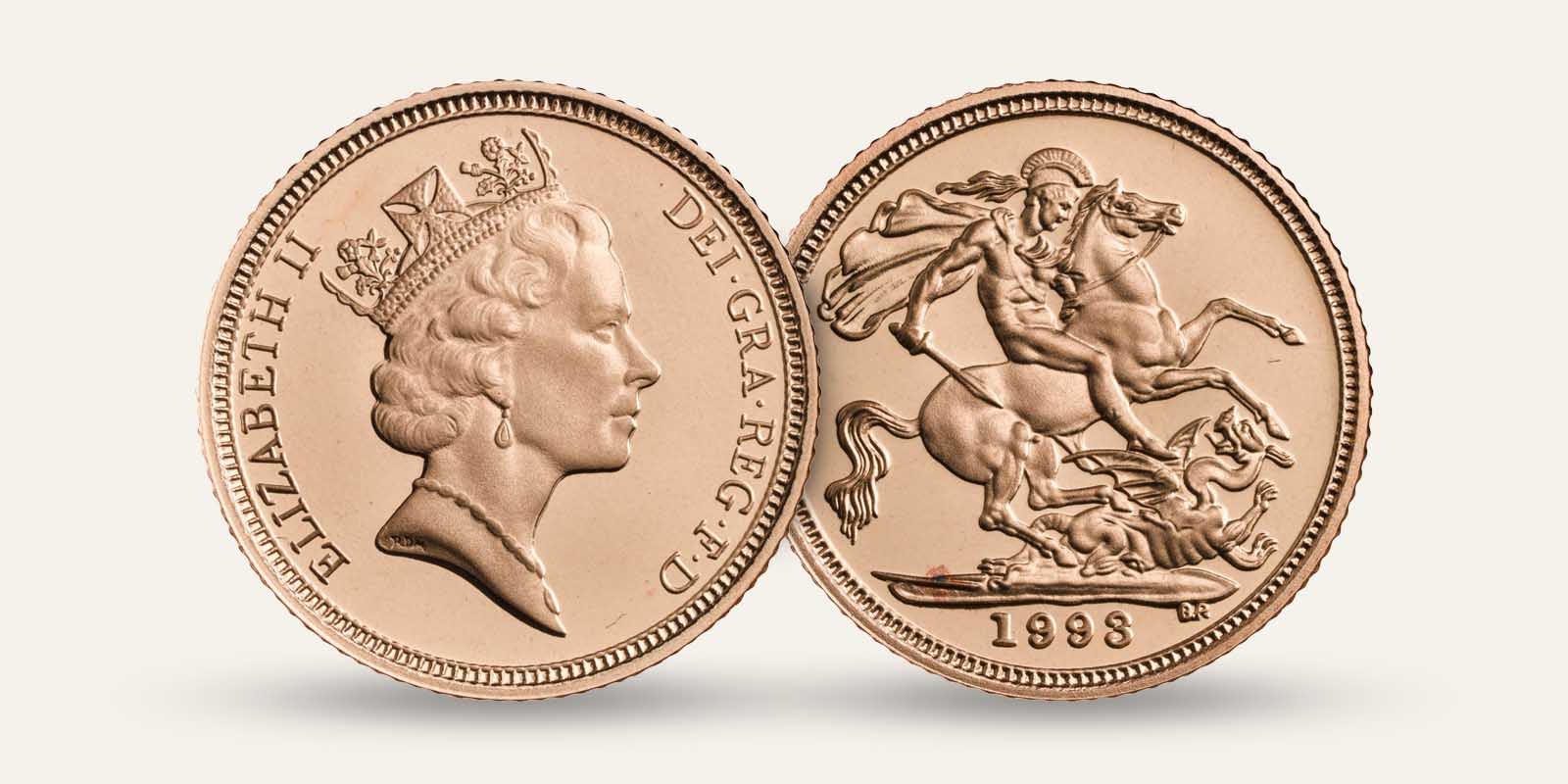
1993 Elizabeth II Gold Proof Sovereign
Not all rare Sovereigns have to be old and struck for kings and queens of the past. Some coins much closer to the modern day excite collectors, and these are no less exquisite than their historic counterparts.
1993 was an important year in Britain. This was the year of the Ruby Jubilee, the 40th anniversary of Her Majesty The Queen’s coronation. The Royal Mint honoured this momentous occasion, as they have for every king and queen since 1935, with a beautifully designed commemorative coin.
This special Sovereign was struck in 22 carat gold and finished to Proof standard to make it a treasured collectable. The familiar Benedetto Pistrucci’s St George and the dragon design features on the reverse as is traditional. The obverse displays the third coinage portrait of The Queen, designed by renowned sculptor Raphael Maklouf, which was used between 1985 and 1997.
Only 4,349 of these sublime coins were struck, and since they were finished to Proof standard, they all went to collectors.
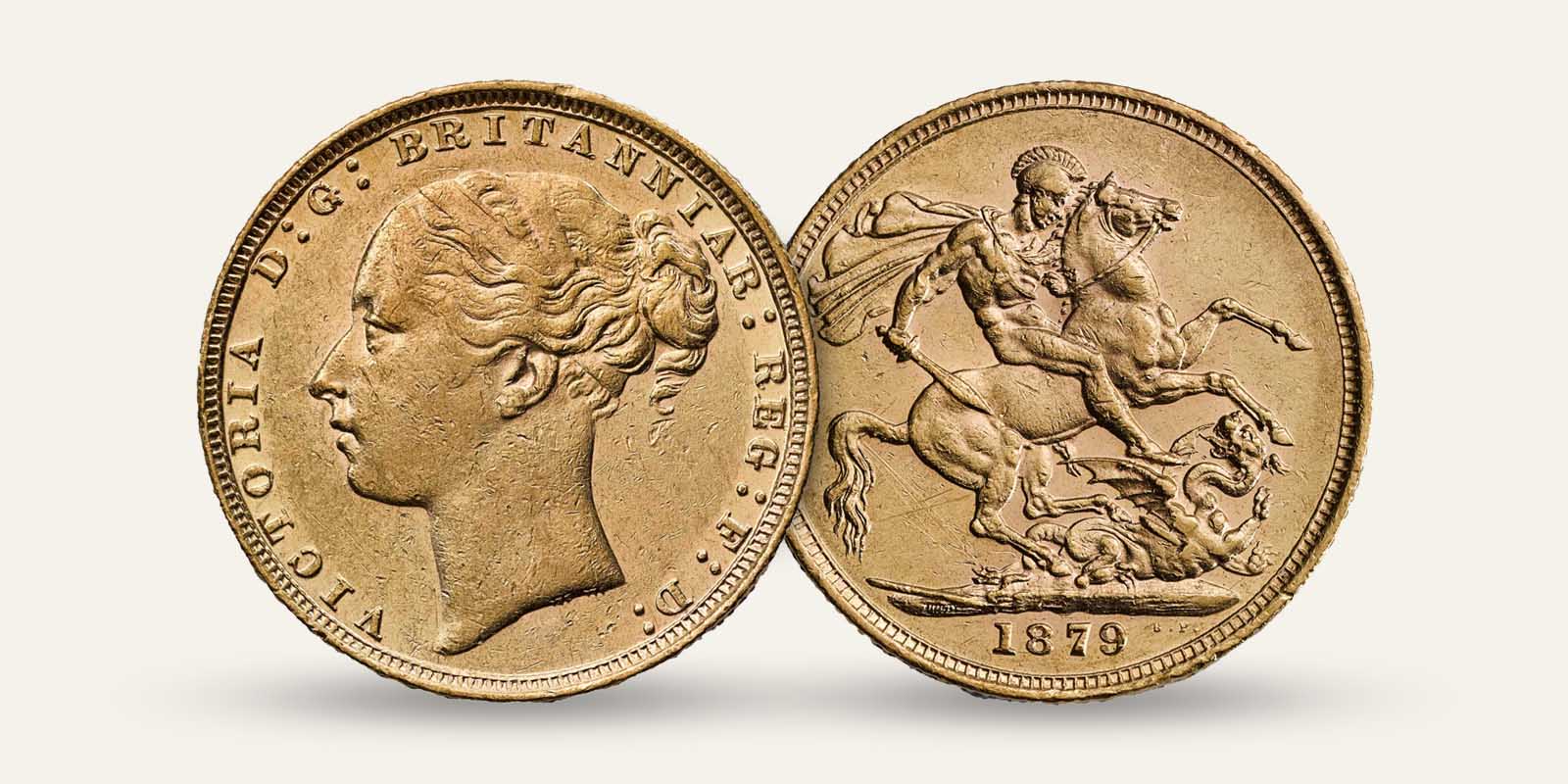
1879 Victoria Young Head St George Sovereign
Military history enthusiasts know that 1879 was a significant year. It saw the start of the Anglo-Zulu war in South Africa and one of the most famous battles in British history, the Battle of Rorke’s Drift. In this legendary battle, just over 150 British soldiers managed to defend a mission station from thousands of Zulu warriors.
The 1879 Sovereign featured Queen Victoria’s favourite portrait that was struck on Sovereigns for the next 47 years. The Queen Victoria ‘Young Head’ portrait on the coin’s obverse was designed by the celebrated engraver, William Wyon RA. The traditional St George and the dragon design features on the reverse.
Only 20,013 of the 22 carat gold coins were struck and it remains one of the rarest Sovereigns in the world. The low mintage coupled with the historic military year makes it extremely popular with collectors.
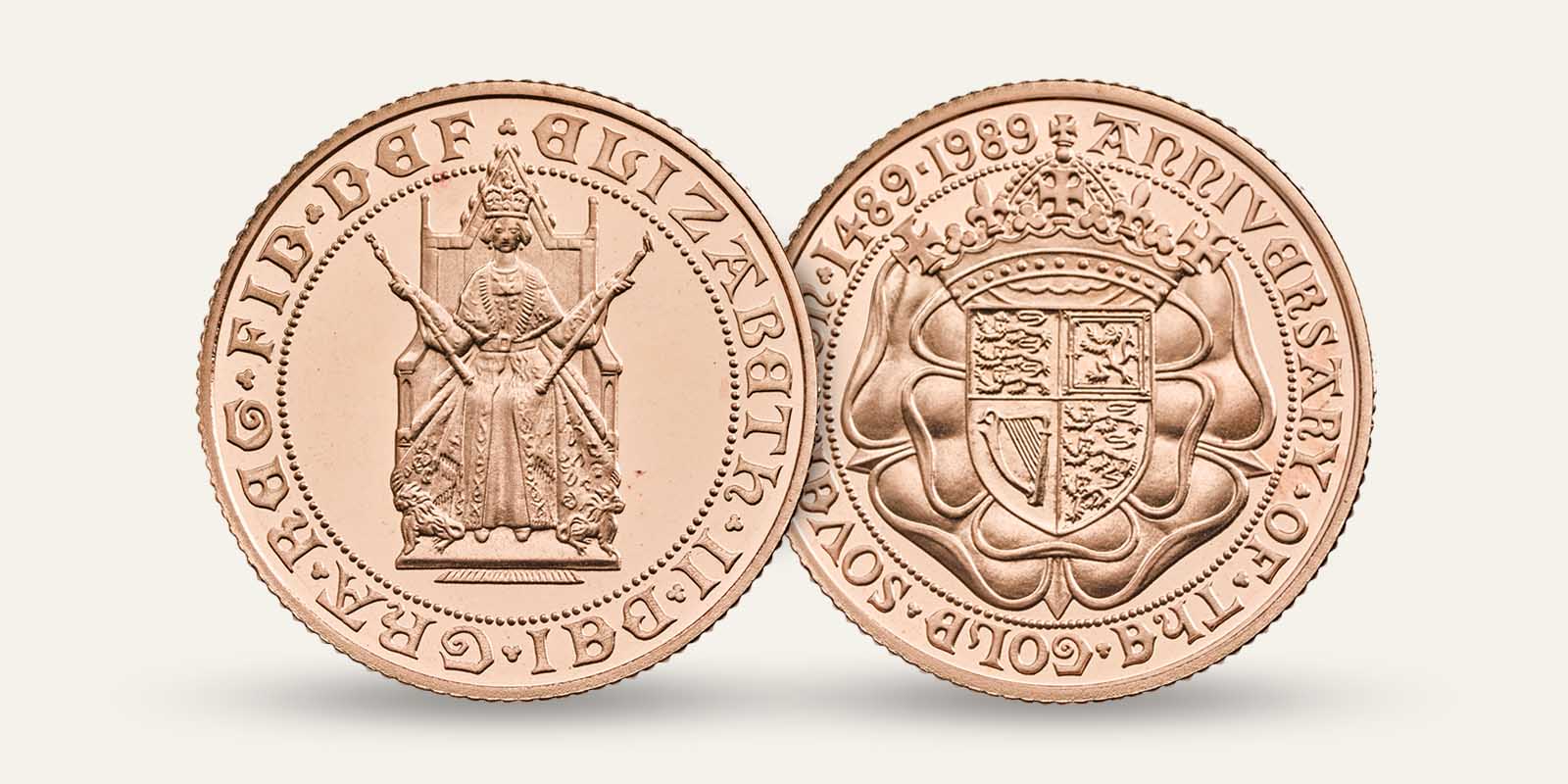
1989 Elizabeth II Gold Proof Sovereign
In 1989 The Sovereign celebrated its 500-year anniversary. As custodians of this historic coin, The Royal Mint marked the monumental milestone with a stunning special edition coin. We took the bold step of redesigning the coin for the first time in over 100 years, for one year only. It was the first time The Sovereign had changed design during Her Majesty’s reign.
The iconic St George and the dragon motif was replaced with an equally stunning crowned shield of the Royal Arms, set upon a double Tudor Rose, in homage to the original Sovereign produced during the reign of Henry VII. The reverse legend featured the words ANNIVERSARY OF THE GOLD SOVEREIGN 1489–1989, which is the first and only time the word ‘sovereign’ has featured on any British coin.
This was not the only historic change to the magnificent coin. For the first time the obverse did not depict Queen Elizabeth II in portrait. On this special coin Her Majesty is seen seated in St Edward’s Chair, used in the coronation of kings and queens since the fourteenth century.
This coin marks a truly significant moment in Sovereign history, and it has proved to be one of the most sought-after coins of Her Majesty’s reign.
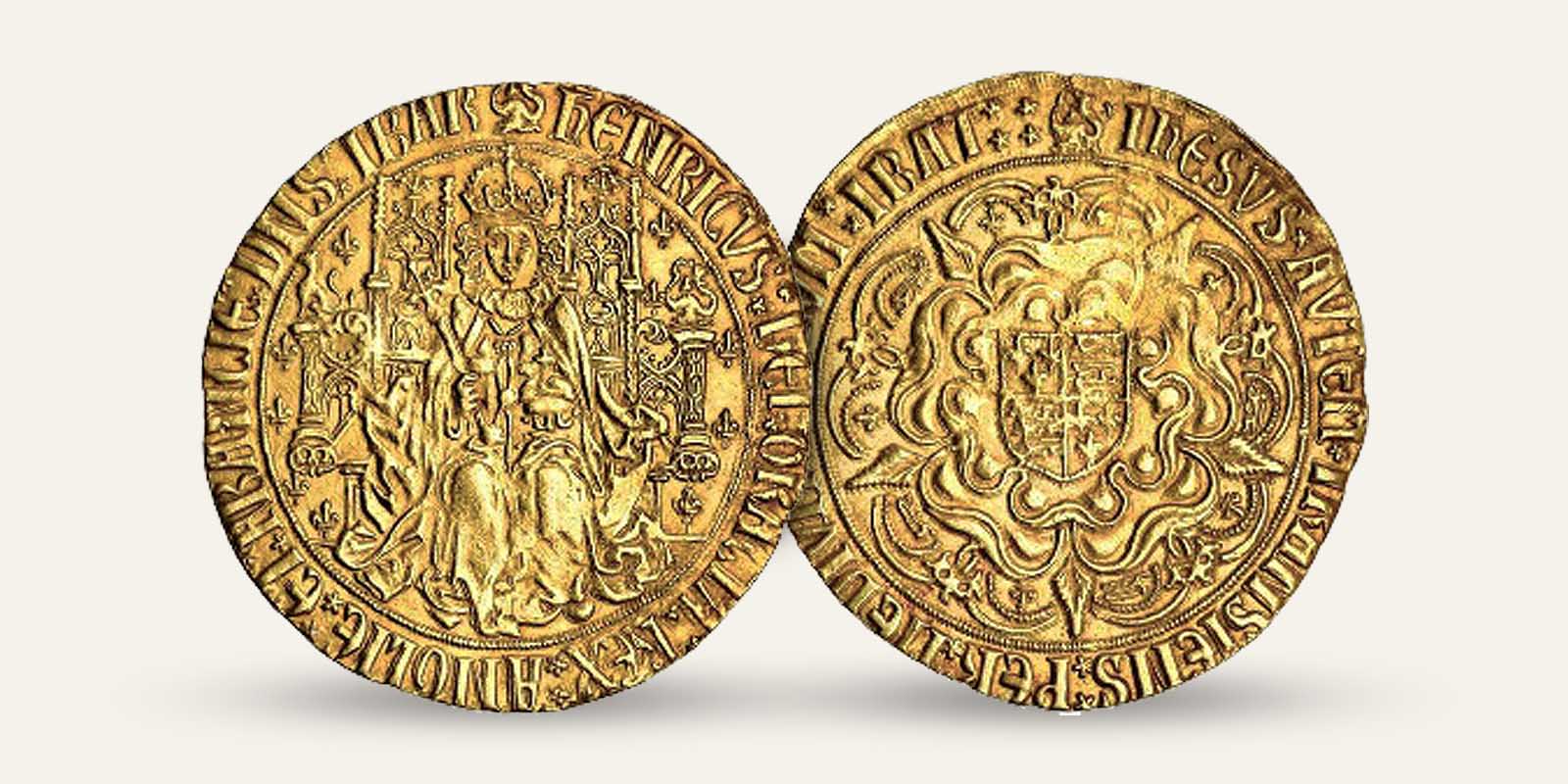
1489 The First Sovereign
It is no surprise that the coin that launched a 533-year legacy (and counting), would become one of the most sought-after coins in the world. This is the coin that started it all, and it marks an incredibly important moment in numismatic history.
With the fall of the last king of the House of York, Richard III, at the Battle of Bosworth Field in 1485, the War of the Roses effectively came to an end. The victor, Henry Tudor, assumed the throne as the first monarch of the Tudor dynasty which reigned for 118 years with some of the most powerful rulers Britain has ever seen.
Like many kings and queens before him, Henry VII sought to demonstrate his authority to his subjects. In 1489, the king began a coinage reformation which saw the introduction of The Sovereign, the largest gold coin yet struck. The new coin was struck from 23 1/3 carat gold, weighed approximately 15.3g and measured approximately 40mm; a fitting coin to honour the powerful king.
Today, it is thought that only two 1489 Sovereigns remain outside museums and institutions.
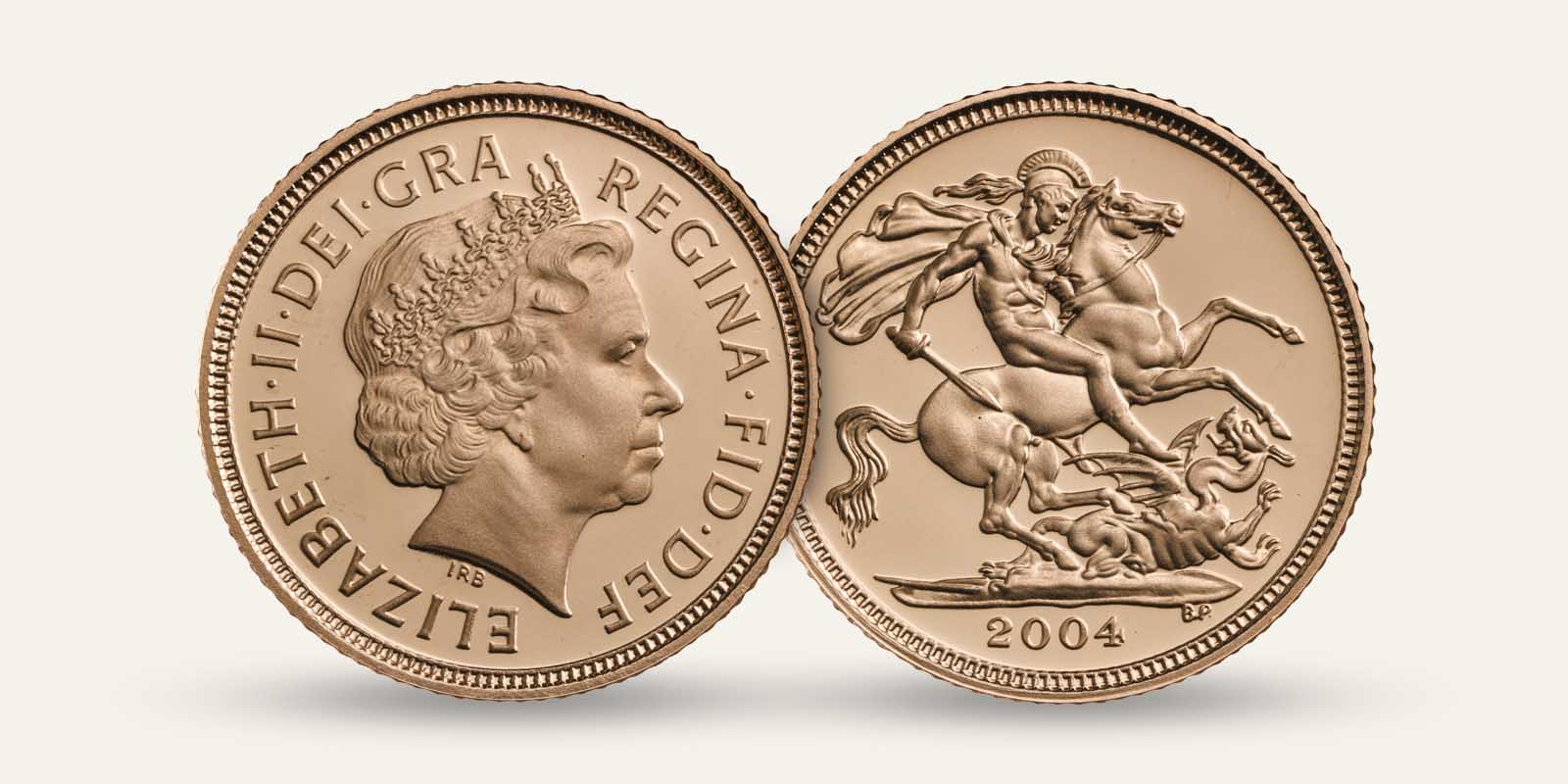
2004 Elizabeth II Gold Bullion Sovereign
The 2004 uncirculated gold Sovereign was an extremely popular coin for investors, but its relatively low mintage makes it popular among collectors too. Only 30,688 bullion coins were struck and a further 10,175 were finished to Proof standard for a flawless example of this historic coin.
The reverse features the classic St George and the dragon design that has featured on The Sovereign since 1817. The exquisite detail brings to life the famous victory of good over evil. Its obverse displays the fourth portrait of The Queen to be used on UK coins. It was designed by Ian Rank-Broadley and in use on coinage from 1998 to 2015.
As the most modern Sovereign to make our list of rare coins, this is a superb example of contemporary coinage that fascinates collectors and proves that classic coins can be produced at any time.
Start Your Collection Today
The Sovereign’s long history and many spectacular editions make it one of the most collectable coin series in the world. With over 1,100 years of experience, The Royal Mint is the best place to start your historic collection.
